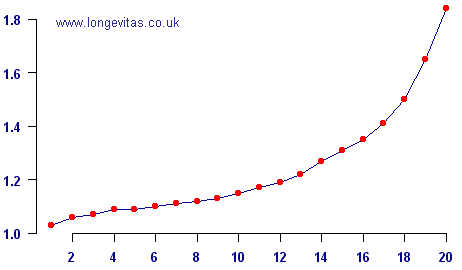Double trouble
Scientists strongly prefer ideas and processes which have undergone anonymous peer review in published, refereed journals. At Longevitas we not only use peer-reviewed materials in our work, but we also publish our own research and results in academic papers. We find it a great discipline, and our work is all the better for it.
One example cropped up recently during anonymous peer-review of a paper we had written. We had included text on the importance of deduplication, which is essential in statistical work with insured data due to to the existence of people in portfolios with multiple policies. The scrutineers of our paper accepted the importance of deduplication, but one of them challenged us with the following:
Is there evidence to support the statement "wealthier people have a greater tendency to have multiple annuities" , beyond the intuitive appeal?
The scrutineer wanted evidence of this claim, despite it appearing uncontroversial. This is the discipline behind peer review: being constantly challenged to prove every part of your claims. Accordingly, we added the following chart based on analysis of the large annuity portfolio underpinning
the research. It shows the average number of policies per individual by size of total annual pension. We have divided this portfolio into twenty equal-sized groups. The poorest 5% are on the far left, where the average number of policies per individual is barely above 1. The richest 5% are on the far right, where the average number of policies is 1.84.

What this graph shows is that there is indeed a strong link between wealth and the number of policies an individual is likely to have. However, statistical models require the independence assumption to hold true, which is not the case if there are too many duplicate policies. Since wealth or socio-economic status is one of the most important risk factors you are likely to be investigating, this shows why deduplication is so important. Clearly, you cannot build a reliable statistical model if an important risk factor is strongly correlated with a violation of the model's founding assumption.


Add new comment